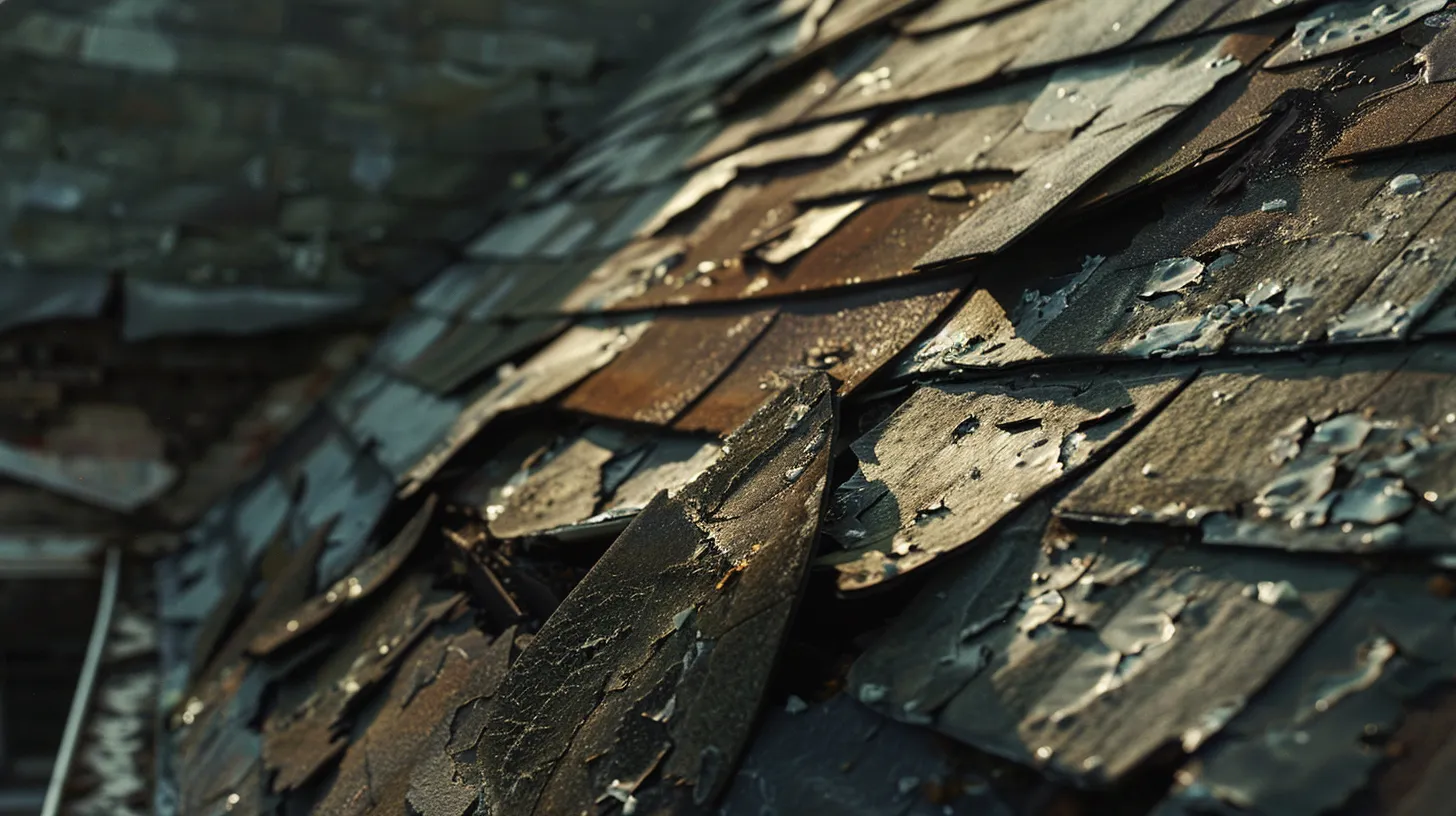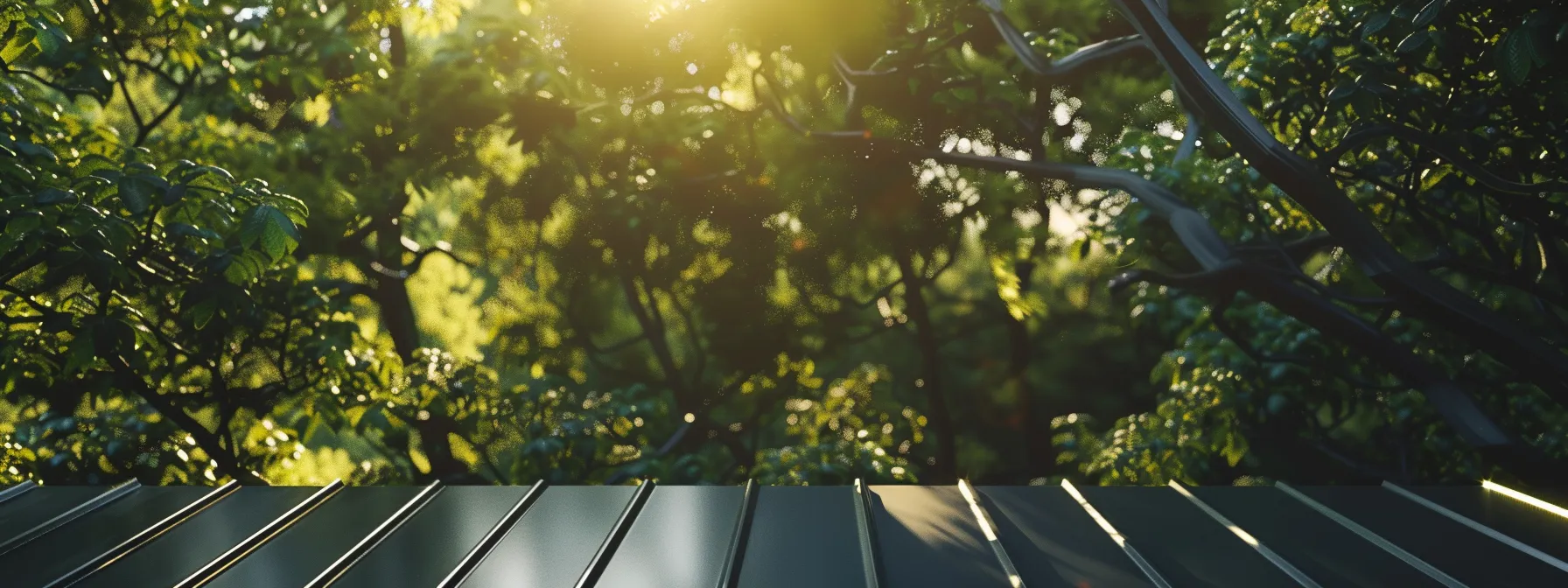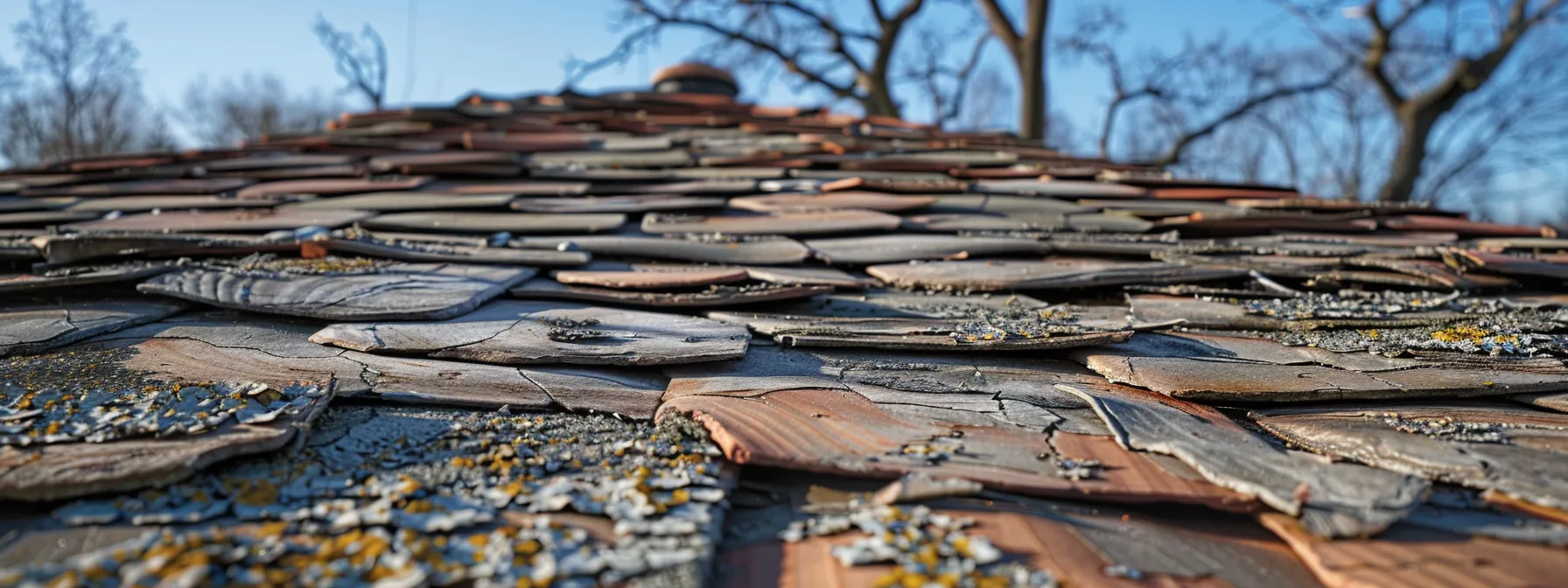
Spotting Roof Wear and Tear: Your Guide to Early Detection
Is your roof showing signs of wear and tear? Spotting early indicators of roof damage can save you from costly repairs down the line. In this guide, you’ll learn how to identify common signs of roof wear, both inside and outside your home. We’ll cover exterior clues like missing shingles and interior red flags such as water stains. By the end, you’ll be equipped to perform a basic roof inspection and know when it’s time to call a professional roofer for a thorough evaluation or potential roof repair or replacement.
Understanding the Importance of Early Detection of Roof Wear and Tear
Early detection of roof wear and tear is crucial for maintaining your home’s integrity. By identifying issues like damaged asphalt shingles or faulty flashing, you can prevent minor problems from escalating. Timely action prolongs your roof’s lifespan, protecting it from wind and hail damage. Regular inspections and prompt repairs save you money in the long run, ensuring your roof remains in top condition.
Preventing Minor Issues From Becoming Major Problems
Addressing minor roof issues promptly can prevent them from escalating into major problems that could lead to extensive water damage or even compromise your home insurance coverage. Regular inspections allow you to identify and fix small issues like loose shingles or minor leaks before they worsen, especially after a storm or prolonged exposure to ultraviolet rays.
By tackling these small problems early, you protect your roof’s integrity and extend its lifespan. This proactive approach is particularly beneficial for all roof types, including metal roofs, which, despite their durability, can still benefit from timely maintenance to prevent corrosion or fastener issues.
Prolonging the Lifespan of Your Roof Through Early Action
Early action is key to prolonging your roof’s lifespan. By regularly inspecting your attic for signs of water damage or mold, you can catch potential issues before they escalate. Pay attention to your metal flashing around the chimney and other roof penetrations, as these areas are prone to wear and can lead to leaks if not maintained properly.
Don’t overlook the growth of moss on your roof, as it can retain moisture and accelerate shingle deterioration. Addressing these issues promptly can significantly extend your roof’s life and prevent costly repairs. Remember, a well-maintained roof not only protects your home but also maintains its value and curb appeal.
Saving Money With Timely Repairs
Timely repairs can save you significant money on home improvement costs. By addressing minor issues promptly, you prevent them from escalating into major problems that require extensive and expensive repairs. Regular roof inspections help identify early signs of wear, such as algae growth or small leaks, allowing you to address them before they cause substantial damage.
Maintaining your roof’s warranty often requires regular inspections and timely repairs. By keeping up with these requirements, you ensure your warranty remains valid, potentially saving you thousands in repair costs. Additionally, a well-maintained roof acts as an effective dam against water intrusion, preventing costly water damage to your home’s interior and structure.
Common Causes of Roof Wear and Tear
Understanding the common causes of roof wear and tear is crucial for maintaining your home’s longevity. Weather effects, poor installation practices, damage from overhanging trees and debris, and inadequate maintenance all play significant roles in residential roofing deterioration. Regular roof inspections can help identify these issues early, ensuring your roof remains in top condition.
Weather Effects on Roofing Materials
Weather is a primary culprit in roof wear and tear, often leading to a damaged roof. Extreme temperatures, UV rays, and moisture can degrade roofing materials over time. You might notice shingles curling, cracking, or losing granules, which are clear signs that your roof needs attention from roofing professionals.
Heavy rain, snow, and hail can cause immediate damage, potentially resulting in leaks that require prompt repair or even full replacement. Regular inspections, especially after severe weather events, can help you identify these issues early. If left unaddressed, weather-related damage can escalate quickly, compromising your roof’s integrity and leading to more extensive and costly repairs.
Impact of Poor Installation Practices
Poor installation practices can significantly impact your roof’s performance and lifespan. When roofing contractors cut corners or lack proper training, they may incorrectly install shingles, flashing, or underlayment, leading to premature roof damage. These mistakes can result in leaks, reduced energy efficiency, and increased vulnerability to hail damage.
To avoid these issues, you should hire reputable roofing professionals with proven experience and credentials. They will ensure proper installation techniques, use quality materials, and adhere to manufacturer specifications. This approach minimizes the risk of early roof wear and tear, reducing the need for frequent roof repairs and extending the life of your roofing system.
Damage From Overhanging Trees and Debris
Overhanging trees pose a significant risk to your roof’s integrity. Falling branches can damage shingles, leading to leaks and potentially necessitating a roof replacement. Additionally, leaves and debris from trees can accumulate on your roof, trapping moisture and promoting the growth of algae, which can compromise your roof’s ventilation and accelerate shingle curling.
To protect your roof and siding, trim branches that hang over your home regularly. This not only prevents physical damage but also allows more sunlight to reach your roof, helping to dry out moisture and reduce the risk of moss growth. By maintaining proper clearance between trees and your home, you can significantly extend the life of your roofing materials and reduce the need for frequent repairs.
Effects of Inadequate Maintenance
Inadequate maintenance significantly increases the risk of roof damage, especially during extreme weather events like thunderstorms or winter storms. By neglecting regular inspections and minor repairs, you allow small issues to escalate, leaving your roof vulnerable to moisture infiltration and structural damage.
Proper maintenance is crucial for protecting your roof against the harsh effects of weather. Regular cleaning, gutter maintenance, and prompt repairs help prevent moisture buildup and extend your roof’s lifespan. By addressing issues early, you can avoid costly repairs and ensure your roof remains resilient against future storms:
- Schedule regular roof inspections
- Clean gutters and downspouts
- Remove debris from roof surfaces
- Address minor repairs promptly
- Ensure proper attic ventilation
Exterior Signs of Roof Wear and Tear to Watch For
Identifying exterior signs of roof wear and tear is crucial for maintaining your property’s integrity. Watch for missing or damaged shingles, cracked flashing, moss growth, sagging roof lines, and granules in gutters. These indicators, often exacerbated by severe weather and climate conditions, can reveal potential issues from your eaves to your ceiling. Regular inspections help prevent minor problems from escalating into major repairs.
Missing or Damaged Shingles
You can easily spot missing or damaged shingles by inspecting your roof from the ground. Look for areas where shingles appear to be missing, cracked, or curling at the edges. Pay close attention to the soffit area, as damage here can indicate broader issues with your roof’s structure.
If you notice dark patches or unevenness in your roof’s appearance, it may signal damaged or missing shingles. These issues can lead to water infiltration and should be addressed promptly to prevent further damage to your roof and home’s interior.
Cracked or Peeling Flashing
You should inspect your roof’s flashing regularly for signs of cracking or peeling. Flashing, typically made of metal or rubber, seals joints around chimneys, vents, and skylights. When it cracks or peels, it can allow water to penetrate your roof, leading to leaks and potential structural damage.
Check for rust spots, gaps, or separation in the flashing material. Pay special attention to areas where the roof meets walls or around roof penetrations. If you notice any issues, it’s crucial to address them promptly to prevent water damage and maintain your roof’s integrity. Here are key areas to inspect:
- Around chimneys and vents
- Along roof valleys
- At roof edges and eaves
- Near skylights and dormers
- Where different roof slopes meet
Growth of Moss, Mold, or Algae
You should regularly check your roof for signs of moss, mold, or algae growth, as these organisms can indicate excessive moisture retention and potential damage. These growths often appear as green, black, or brown patches on your shingles, particularly in shaded areas or regions with high humidity. If left untreated, they can trap moisture against your roof, leading to premature shingle deterioration and potential leaks.
To address this issue, you can use specialized roof cleaning solutions or hire professional roof cleaners to remove the growth safely. Consider installing zinc or copper strips near the roof’s peak, as these metals naturally inhibit moss and algae growth. Remember, prevention is key – ensure proper roof ventilation and trim overhanging branches to reduce shaded areas on your roof.
Sagging or Uneven Roof Lines
You should regularly inspect your roof for signs of sagging or uneven lines, as these can indicate serious structural issues. Look for any dips, waves, or areas where the roof doesn’t appear straight. These problems often result from water damage, inadequate support, or excessive weight on the roof structure.
To identify sagging or uneven roof lines, step back and view your roof from different angles. Pay attention to the ridge line and the roof edges. If you notice any irregularities, it’s crucial to have a professional roofing contractor assess the situation promptly. Addressing these issues early can prevent more extensive damage and costly repairs:
- Check roof ridge for straightness
- Inspect eaves for consistent alignment
- Look for dips or waves in roof planes
- Examine interior ceilings for signs of sagging
- Assess attic for proper support and ventilation
Accumulation of Granules in Gutters
Check your gutters regularly for an accumulation of granules, which are the sandpaper-like particles that cover asphalt shingles. Excessive granule loss indicates your shingles are deteriorating and may need replacement. This issue often occurs as shingles age or after severe weather events.
To assess granule loss, examine your gutters after rainstorms or when cleaning them. If you notice a significant amount of granules, it’s time to have your roof inspected by a professional. Addressing this issue promptly can prevent more extensive damage and extend your roof’s lifespan.
Interior Indicators of Roof Problems
Interior signs of roof problems can be as telling as exterior indicators. Watch for water stains on ceilings or walls, mold or mildew growth, peeling paint or wallpaper, and light coming through your attic. These issues often signal underlying roof damage that requires prompt attention to prevent further deterioration and maintain your home’s structural integrity.
Water Stains on Ceilings or Walls
You should regularly inspect your ceilings and walls for water stains, as they often indicate a roof leak. These stains typically appear as discolored patches or rings on your ceiling or walls, ranging from light brown to dark yellow. If you notice such marks, especially after heavy rain or snow, it’s crucial to investigate the source promptly to prevent further damage to your home’s interior.
Don’t ignore small water stains, as they can quickly escalate into larger problems. Even minor leaks can lead to significant structural damage, mold growth, and compromised insulation if left unaddressed. When you spot a water stain, trace its origin by checking your attic for signs of water infiltration. This proactive approach can help you identify and fix roof issues before they require extensive repairs.
Presence of Mold or Mildew Indoors
You should be vigilant for signs of mold or mildew inside your home, as these can indicate roof leaks or excessive moisture. Check corners, baseboards, and areas around windows for dark spots or fuzzy growths. If you notice a musty odor, investigate further, as this often signals hidden mold growth.
Address any mold or mildew issues promptly to protect your health and home’s structure. Inspect your attic for damp insulation or wood, which can foster mold growth. If you discover mold, consult a professional to assess the extent of the problem and identify its source, which may be a compromised roof allowing water infiltration.
Peeling Paint or Wallpaper
When you notice peeling paint or wallpaper, especially near exterior walls or ceilings, it often indicates moisture infiltration due to roof problems. This issue typically occurs when water seeps through damaged roofing materials, compromising the integrity of your walls and ceilings. Inspect these areas closely, paying particular attention to corners and seams where moisture tends to accumulate.
Address peeling paint or wallpaper promptly to prevent further damage to your home’s interior. Start by identifying the source of moisture, which may require a thorough roof inspection. Once you’ve addressed the root cause, repair the affected areas to restore your home’s appearance and protect against future moisture-related issues. Consider using moisture-resistant paints or wallpapers in prone areas for added protection:
Light Shining Through the Attic
Check your attic for any visible light coming through the roof boards or sheathing. Daylight penetrating your attic indicates gaps or holes in your roof, which can lead to water infiltration and energy loss. Pay special attention to areas around chimneys, vents, and where different roof planes meet, as these are common spots for light penetration.
Address any light penetration issues promptly to prevent further damage. Even small openings can allow moisture and pests to enter your home, potentially causing significant damage over time. If you spot light coming through, mark these areas for closer inspection from the roof’s exterior and consider contacting a professional roofer for a thorough assessment and necessary roof repair replacement.
How to Perform a Safe Roof Inspection
Performing a safe roof inspection is crucial for identifying early signs of wear and tear. Prepare for the inspection with safety in mind, gather necessary tools, and follow a step-by-step guide to check your roof thoroughly. Document any issues you find for future reference. This approach ensures a comprehensive assessment of your roof’s condition while prioritizing your safety.
Preparing for the Inspection With Safety in Mind
Before conducting a roof inspection, prioritize safety by gathering essential protective gear. Wear sturdy, non-slip shoes, use a safety harness if accessing steep slopes, and consider weather conditions. If you’re uncomfortable with heights or lack experience, it’s best to hire a professional roofing contractor for a thorough inspection.
Prepare your inspection route by clearing obstacles and ensuring a stable ladder placement. Inform someone about your inspection plans and estimated duration. Have a charged phone with you in case of emergencies. By taking these precautions, you’ll be better equipped to safely assess your roof’s condition:
Tools Needed for an Effective Inspection
To conduct an effective roof inspection, you’ll need a few essential tools. Equip yourself with a sturdy ladder, binoculars for distant viewing, a flashlight for attic inspections, and a digital camera to document any issues you find. These tools will help you safely examine your roof’s condition from various angles.
Consider using a moisture meter to detect hidden water damage and a measuring tape to assess the extent of any visible issues. Don’t forget to bring a notepad or smartphone to record your observations. These tools will enable you to perform a thorough inspection, identifying potential problems before they escalate into costly repairs.
Step-by-Step Guide to Checking Your Roof
Begin your roof inspection from the ground, using binoculars to survey the overall condition. Look for obvious signs of damage or wear, such as missing shingles or sagging areas. Then, safely access your attic to check for light penetration, water stains, or mold growth, which can indicate roof issues.
Next, if it’s safe to do so, inspect the roof’s surface closely. Check for loose, cracked, or curling shingles, damaged flashing around vents and chimneys, and signs of moss or algae growth. Pay special attention to roof valleys and areas around skylights, as these are prone to leaks. Follow this step-by-step process:
- Perform ground-level visual inspection
- Examine attic for signs of leaks or damage
- Safely access the roof surface
- Inspect shingles, flashing, and vulnerable areas
- Check gutters for debris and granule accumulation
- Document any issues found with photos and notes
Documenting Issues for Future Reference
Document all roof issues you discover during your inspection to create a comprehensive record for future reference. Take clear, detailed photos of any damage, wear, or potential problem areas you identify. Note the location and extent of each issue, including measurements where applicable. This documentation will help you track changes over time and provide valuable information for roofing professionals if repairs become necessary.
Create a digital or physical folder to organize your roof inspection findings. Include dates of inspections, observed issues, and any actions taken. This record will prove invaluable for maintaining your roof’s warranty, planning for future repairs, and demonstrating proper maintenance if you decide to sell your home. Consider using a spreadsheet or home maintenance app to track your roof’s condition systematically:
When to Consult a Professional Roofer
Recognizing when to consult a professional roofer is crucial for maintaining your home’s integrity. Learn to identify signs that require expert attention, understand the risks of DIY repairs, and choose a qualified roofing specialist. This knowledge will help you plan effectively for repairs or replacement, ensuring your roof remains in top condition.
Recognizing Signs That Require Expert Attention
You should consult a professional roofer when you notice persistent leaks, extensive shingle damage, or significant sagging in your roof structure. These issues often indicate serious problems that require expert assessment and repair. If you observe daylight coming through your roof boards or find large amounts of granules in your gutters, it’s time to call a roofing specialist.
Don’t hesitate to seek professional help if you spot signs of water damage inside your home, such as stains on ceilings or walls, or if you detect a musty odor in your attic. These symptoms often signal underlying roof problems that need immediate attention. Remember, addressing these issues promptly can prevent more extensive and costly damage to your home:
Understanding the Risks of DIY Repairs
You should understand the risks associated with DIY roof repairs before attempting them. Climbing on your roof without proper safety equipment can lead to falls and serious injuries. Additionally, incorrect repairs may void your roof’s warranty and cause more damage, leading to costly fixes later.
DIY repairs often fail to address underlying issues, potentially allowing water damage to worsen over time. Without professional expertise, you might miss critical problems that require immediate attention. Consider the long-term consequences of improper repairs on your home’s value and structural integrity:
Choosing a Qualified Roofing Specialist
When selecting a qualified roofing specialist, prioritize experience and credentials. Look for contractors with extensive experience in your specific roofing type and proper licensing and insurance. Check their reputation through online reviews and ask for references from past clients to ensure they have a track record of quality work and customer satisfaction.
Request detailed written estimates from multiple roofing specialists to compare their offerings. Ensure each estimate includes the scope of work, materials to be used, project timeline, and warranty information. Don’t automatically choose the lowest bid; instead, consider the overall value, including the quality of materials and workmanship offered. A reputable roofing professional will be happy to answer your questions and provide clear communication throughout the process.
Planning for Repairs or Replacement
When planning for roof repairs or replacement, start by scheduling a comprehensive inspection with a professional roofer. They’ll assess your roof’s condition, identify necessary repairs, and provide a detailed estimate. This evaluation helps you understand the scope of work required and allows you to budget accordingly.
Consider the age of your roof and the extent of damage when deciding between repairs and replacement. If your roof is nearing the end of its lifespan or has extensive damage, replacement might be more cost-effective in the long run. Discuss your options with your roofing contractor and plan the project timeline to minimize disruption to your daily life:
- Schedule a professional roof inspection
- Obtain detailed estimates for repairs or replacement
- Consider roof age and extent of damage
- Discuss options with your contractor
- Plan project timeline and budget
Conclusion
By understanding the signs of roof wear and tear, you can protect your home from costly damage. Regular inspections and prompt action are key to maintaining your roof’s integrity and extending its lifespan.
Remember to check for both exterior and interior indicators of roof problems. Look for missing shingles, water stains, and sagging roof lines. Don’t overlook the importance of attic inspections for signs of leaks or light penetration.
When you spot issues, assess whether you can safely address them yourself or if professional help is needed. For complex problems or safety concerns, always consult a qualified roofing specialist to ensure proper repairs and maintain your warranty.
By staying vigilant and addressing roof wear early, you’ll save money on repairs and protect your home’s value. Regular maintenance and timely interventions are your best defense against roof deterioration and potential structural damage.
Frequently Asked Questions
How often should I inspect my roof for signs of wear and tear?
You should inspect your roof at least twice a year, typically in spring and fall, and after severe weather events. Regular inspections help identify early signs of damage, preventing costly repairs and extending your roof’s lifespan. Don’t hesitate to contact a professional for a thorough assessment.
What are the most common causes of roof damage?
Roof damage often stems from severe weather, including hail, strong winds, and heavy snow. Aging materials, poor maintenance, and faulty installation can also lead to issues. Tree branches, debris accumulation, and pests contribute to roof deterioration, necessitating regular inspections and timely repairs.
Can roof problems be detected from inside the house?
Yes, roof problems can often be detected from inside your house. Look for water stains on ceilings or walls, sagging areas, light coming through the attic, or mold growth. These signs can indicate leaks, structural issues, or poor ventilation in your roof, requiring professional inspection and repair.
Is it safe to perform a roof inspection myself?
While it’s possible to visually inspect your roof from the ground, it’s not recommended to climb onto your roof yourself. Professional roof inspections are safer and more thorough, as trained contractors can spot issues you might miss and have the proper safety equipment to navigate steep or slippery surfaces.
When should I call a professional roofer for an inspection?
You should call a professional roofer for an inspection after severe weather events, if you notice visible damage or leaks, when your roof is approaching its expected lifespan, or if you’re planning to sell your home. Regular inspections every 1-2 years are also recommended for preventive maintenance.
Conclusion
Spotting early signs of roof wear and tear is crucial for maintaining your home’s integrity and avoiding costly repairs. Regular inspections, both inside and outside your home, can help you identify potential issues before they escalate into major problems. By addressing minor issues promptly, you can extend your roof’s lifespan, protect your home from water damage, and maintain its value. Remember, when in doubt, consult a professional roofer to ensure proper assessment and repairs, safeguarding your home for years to come.




